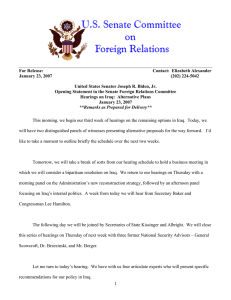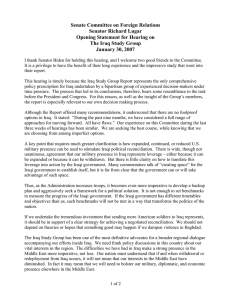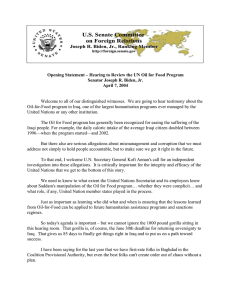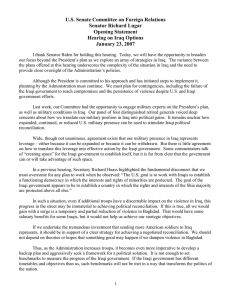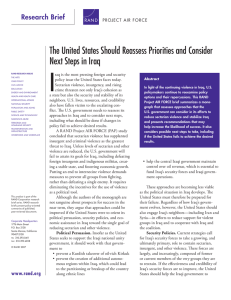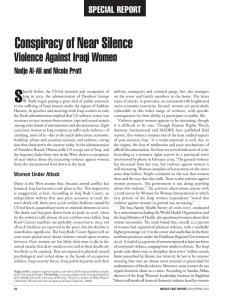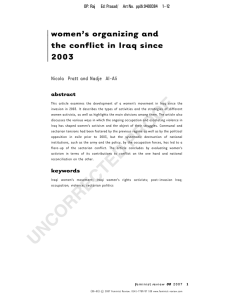Choosing Victory – A Plan for Success in Iraq
advertisement
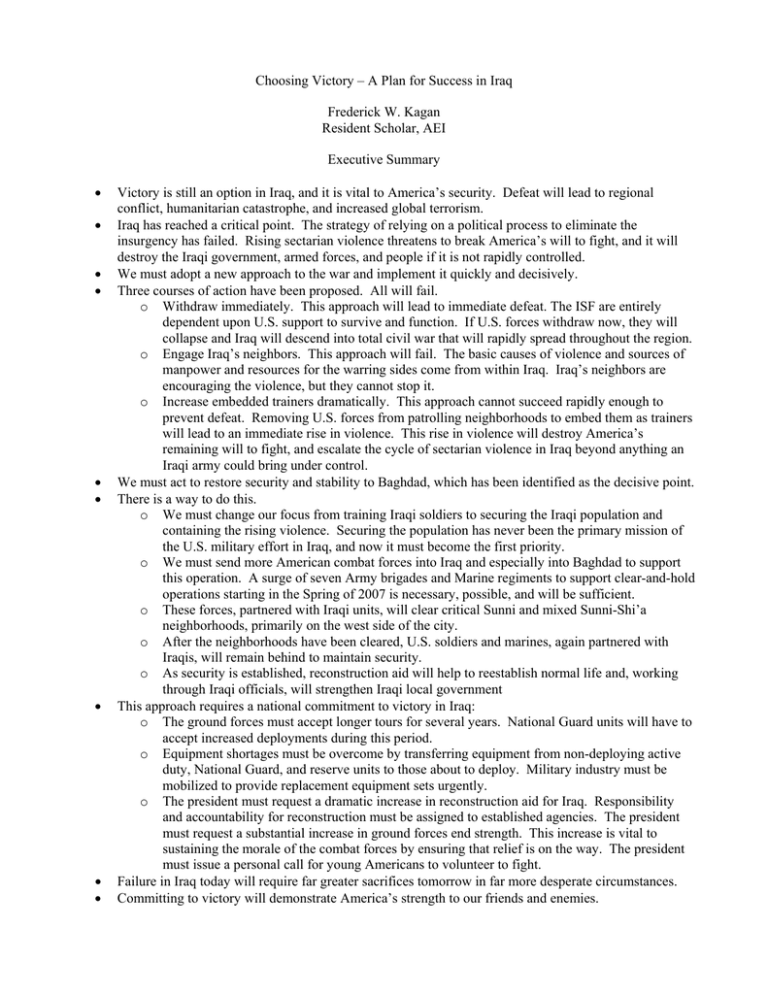
Choosing Victory – A Plan for Success in Iraq Frederick W. Kagan Resident Scholar, AEI Executive Summary • • • • • • • • • Victory is still an option in Iraq, and it is vital to America’s security. Defeat will lead to regional conflict, humanitarian catastrophe, and increased global terrorism. Iraq has reached a critical point. The strategy of relying on a political process to eliminate the insurgency has failed. Rising sectarian violence threatens to break America’s will to fight, and it will destroy the Iraqi government, armed forces, and people if it is not rapidly controlled. We must adopt a new approach to the war and implement it quickly and decisively. Three courses of action have been proposed. All will fail. o Withdraw immediately. This approach will lead to immediate defeat. The ISF are entirely dependent upon U.S. support to survive and function. If U.S. forces withdraw now, they will collapse and Iraq will descend into total civil war that will rapidly spread throughout the region. o Engage Iraq’s neighbors. This approach will fail. The basic causes of violence and sources of manpower and resources for the warring sides come from within Iraq. Iraq’s neighbors are encouraging the violence, but they cannot stop it. o Increase embedded trainers dramatically. This approach cannot succeed rapidly enough to prevent defeat. Removing U.S. forces from patrolling neighborhoods to embed them as trainers will lead to an immediate rise in violence. This rise in violence will destroy America’s remaining will to fight, and escalate the cycle of sectarian violence in Iraq beyond anything an Iraqi army could bring under control. We must act to restore security and stability to Baghdad, which has been identified as the decisive point. There is a way to do this. o We must change our focus from training Iraqi soldiers to securing the Iraqi population and containing the rising violence. Securing the population has never been the primary mission of the U.S. military effort in Iraq, and now it must become the first priority. o We must send more American combat forces into Iraq and especially into Baghdad to support this operation. A surge of seven Army brigades and Marine regiments to support clear-and-hold operations starting in the Spring of 2007 is necessary, possible, and will be sufficient. o These forces, partnered with Iraqi units, will clear critical Sunni and mixed Sunni-Shi’a neighborhoods, primarily on the west side of the city. o After the neighborhoods have been cleared, U.S. soldiers and marines, again partnered with Iraqis, will remain behind to maintain security. o As security is established, reconstruction aid will help to reestablish normal life and, working through Iraqi officials, will strengthen Iraqi local government This approach requires a national commitment to victory in Iraq: o The ground forces must accept longer tours for several years. National Guard units will have to accept increased deployments during this period. o Equipment shortages must be overcome by transferring equipment from non-deploying active duty, National Guard, and reserve units to those about to deploy. Military industry must be mobilized to provide replacement equipment sets urgently. o The president must request a dramatic increase in reconstruction aid for Iraq. Responsibility and accountability for reconstruction must be assigned to established agencies. The president must request a substantial increase in ground forces end strength. This increase is vital to sustaining the morale of the combat forces by ensuring that relief is on the way. The president must issue a personal call for young Americans to volunteer to fight. Failure in Iraq today will require far greater sacrifices tomorrow in far more desperate circumstances. Committing to victory will demonstrate America’s strength to our friends and enemies.
